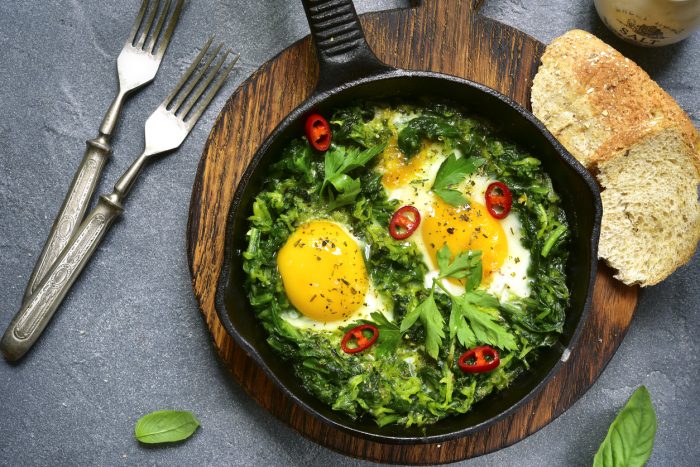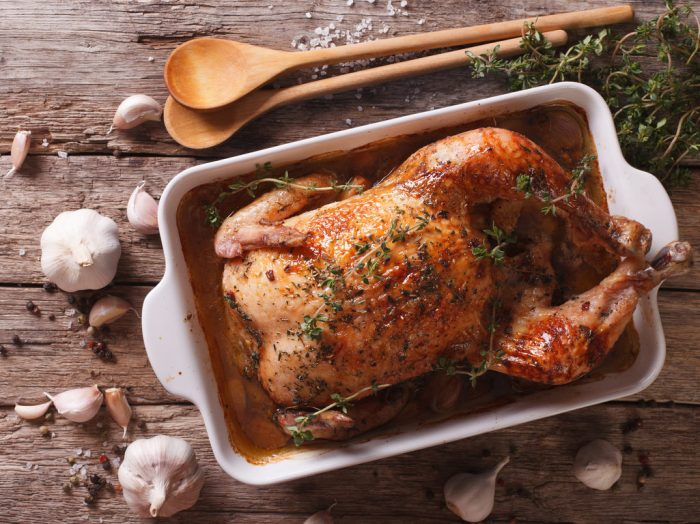The Middle Eastern-born shakshuka is a wonderful, hearty, healthy and tasty dish. But how do you make sure it’s all that it can be? There are ways to make the perfect shakshuka. Here are a guide and some ideas!
Let’s get you started on the road to loving this North African-born dish. But the perfect shakshuka? That is the dream, after all. Customizing the dish to suit your wildest dreams. And of course, we’ve got some ideas on that. There are a few basic rules you should follow and everything will turn out OK. Let’s do this!
Where do you start with the perfect shakshuka?
The dish is quite flexible and easy to fall in love with. Because the simplest rule or definition is that shakshuka is a dish with eggs simmered in a base of stewed tomatoes and peppers. From there, the possibilities are endless and the sky’s the limit. Don’t be afraid to reach for the stars.
Shakshuka is a one-pan dish which doesn’t leave much for cleanup. Especially if you dunk some nice whole-wheat bread into the yolk and sauce mixture. There are two essential components to the dish: the rich tasting eggs cooked to perfection and the sauce you cook them in, which can lean on the spicy or acidic side.
Start off with this quick and easy shakshuka, and then experiment with ingredients!
How do you customize?
1.Tomatoes
The diversity of tomato use in perfect shakshuka is almost endless. You can use them canned, or fresh, diced or pureed. You can leave them out entirely if you plan on going for something spicier, with a different texture. Of course, you will also need quality tomatoes if you use them, so choose wisely. You can peel them or keep the skin on. You can mix and match different types of tomatoes. You can dilute with water. The choice is yours and you know best how you like those yummy things.
Purists will tell you that canned tomatoes are forbidden, but we think that you should do what works best for you (and what is a bit time-saving, too). The good news is that overripe tomatoes, that are too mushy for salad, will work splendidly in a shakshuka.
2.The seasoning
Cumin is one of the favored spices when it comes to shakshuka. Some use cumin seeds, other go for ground cumin. Paprika is also a favorite, be it smoked or sweet. You can pick from coriander, Aleppo pepper, Cayenne pepper, or curry powder, too. Garlic is of capital importance in my book, and you can choose to use freshly minced cloves or garlic powder. Add some jalapeno slices if you’re one of those people who don’t mind their mouth being on fire (I am, join my club!).

3. The cooking style
Shakshuka might be a one-skillet dish, but you can do way more with it than you think. You can cook it on the stove top, or in the oven, or you could find the middle path on that and finish it off in the oven after you’ve cooked it on the stove-top.
If you want a special presentation, you can make it as a casserole. And if you have fancy guests, how about some shakshuka ramekins, each one with a nicely baked egg on top?
4. The toppings
From a very early age, I’ve had trouble separating the concepts of “eggs” and “bacon”, so adding some bacon bits as toppings on the shakshuka, get them nice and crispy, came naturally to me. If you’re making a casserole, you can cover the dish with bacon slices. And you’ve chosen ramekins, by all means, use bacon slices as a base for the whole thing.
And of course, there is the cheesy matter of using some cheese on top. Like ground parmesan or shredded mozzarella, or – why not? – some great golden Cheddar. Just go with your whims. Let yourself be free when cooking.
If you’re dairy-free or vegetarian, chop up some nice fresh herbs like chives, parsley, or coriander and use them to finish the dish, for some vibrant green on your table. Olives will do well, too.
Once you’ve got the basics down, you can play with toppings. Try this salami shakshuka asap!
5. The vegetables
Most anything will work here. You can use peppers and onion and soften them up, but by all means experiment with some potatoes, beans, some eggplant or zucchini, even artichoke hearts.
6. The eggs
You should always cook them slowly, that is the rule. But you can also try a variation on how you cook them. You can use a fork to blend the egg whites in the sauce, but be careful not to break the delicate yolks. Or you can scramble those, too, if you’re so inclined. You can also try cooking the dish with or without the lid, to see how the eggs set on both versions.
The basic rules of perfect shakshuka
1. Saute the vegetables
You will want the veggies to be silky and soft before adding the sauce. Use butter or olive oil as the fat. And once they’re softened, spice them with whatever you chose as flavorings – that way, their flavor is absorbed by the fat which transfers it to the whole dish.
2. Simmer the sauce
You can use tomatoes, or you can actually make a white sauce with heavy cream or coconut milk. You don’t have to go for tomato sauce if you’re not a fan. The sauce should be thick enough to support the eggs.

3. Add sensitive greens
I know what you’re thinking: eggs go great with spinach, for instance. So if you want to add those healthy leafy greens, add them after the sauce, so that they don’t wilt and lose all their flavor.
4. Add the eggs
Cook the eggs on top of the sauce and veggies until the egg whites are set. If you want to steam the yolks, cover them up with a lid. If you want a bit of crunch, cook them out in the open.
5. Garnish
This is where you top everything off with the items of your dreams! Enjoy your customized shakshuka to the fullest!






